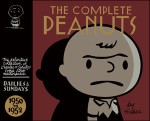Second post-mortem piece on BloggerCon, trying to dive into the hype and document why I think blogs are revolutionary.
Most of the discussion at BloggerCon, at least on Day One, focused on ways that blogging and the lowered threshold of entry to self-publication facilitated a more empowered, more aware population. I heard an emergent theory of blog empowerment that goes something like this: voice, connection, power. (For background on this piece, read my strawman definition of blogs from the conference.)
Blogs providing voices
By providing a central place for the blogger’s work, the blog collects everything the blogger writes in one place, in a chronology. By reading the blogger’s past writing, we can discover that the blogger has held the same opinion over time, or has changed it; who the blogger likes, whom he or she distrusts; what subjects engage the blogger’s energy; and (by following links back to the blogger) who has opinions about the blogger’s work. By providing this ongoing trail of words, this rich back history, and links, the blogger creates an online voice with history, chronology, evolution, and context.
More importantly, the act of posting thoughts in a blog on the Internet (as opposed to in a private document) enables others to hear that voice. If the blogger’s words are heard, and others enter into dialog, the blogger has ceased to be a passive observer of the Internet and has instead become a creator of it. This enables people—whether 12-year-old confused adolescents, 24-year-old software programmers in cubicle farms, 30-year-old Iraqi translators in Baghdad reporting from inside a war, or sixty-year-old grandmothers with a passion for presidential politics—who might never have written anything before to be read around the world.
In education, blogs are being used as teaching aids to help students, from elementary school through graduate programs, to learn to express their thoughts, read and evaluate other sources, and to enter into dialog. Seminarians who blog learn to take responsibility for their daily thoughts and actions. Business students who blog learn how to cooperate with others in loosely distributed groups to have open and constructive discussions and defend their views. Students in impoverished nations who find gaps in curriculum for their native languages are encouraged to fill the gaps with their own writing.
Blogs mediating connections
A big conference theme was blogs as mediating transformative connections. By providing alternative outlets for publishing commentary on other materials on the web and for relating first-hand experience, blogs enable individuals to publish opinions and other material that might not otherwise be published—this is empowerment by publishing.
Blogs written by individuals inside institutions also, through their personal nature, offer the readers of those blogs a connection to the institution at an individual level that they would not experience otherwise. This empowers them through connecting them more closely to that institution and enabling them to better understand the institution. This is empowerment by access.
Finally, when the blogger outside the institution publishes a comment and a link to the work of the blogger inside the institution, and the institutional blogger reciprocates with a link, a relationship develops between the two, the outsider and the institution, that helps the outsider to understand, and in some cases affect, the institution. This is empowerment by relationship.
In journalism, the effect of this empowerment is to greatly expand the power of the non-institutional observer of events, formerly only a reader or consumer of journalism, to create and publish his own version of events, to enter into dialog with the institution that published the first version, and occasionally—as in the case of Trent Lott—to change the tone of the institutional coverage and affect the course of events.
This is an expanded version of Jim Moore’s thesis of the Second Superpower, because in this scenario blogs empower the people inside the institution as well. By providing voices to the powerless, and by giving a voice in the same sphere to individuals inside institutions, greater understanding between the two parties can be reached, opinions can be formed and shaped, and change can be effected.
At the conference, Chris Lydon, Doc Searls, and others observed that this is a process that has been going on for a long time, since the printing press became available to Tom Paine as a means of disseminating his thoughts on political theory. Dave Weinberger posited that blogs put the nail in the coffin of “objective voices” and help to expose the myriad of overlapping subjectivities by which individual thoughts become part of the public record, shape policy, and create history.
Me? I think there’s a lot of promise. I think a lot of conference attendees were right to point out that blogging is a limited empowerment that presupposes a level of access and literacy that are by themselves pretty empowering. But there is something about the way this particular method of communication has shaped up that gives me hope.

